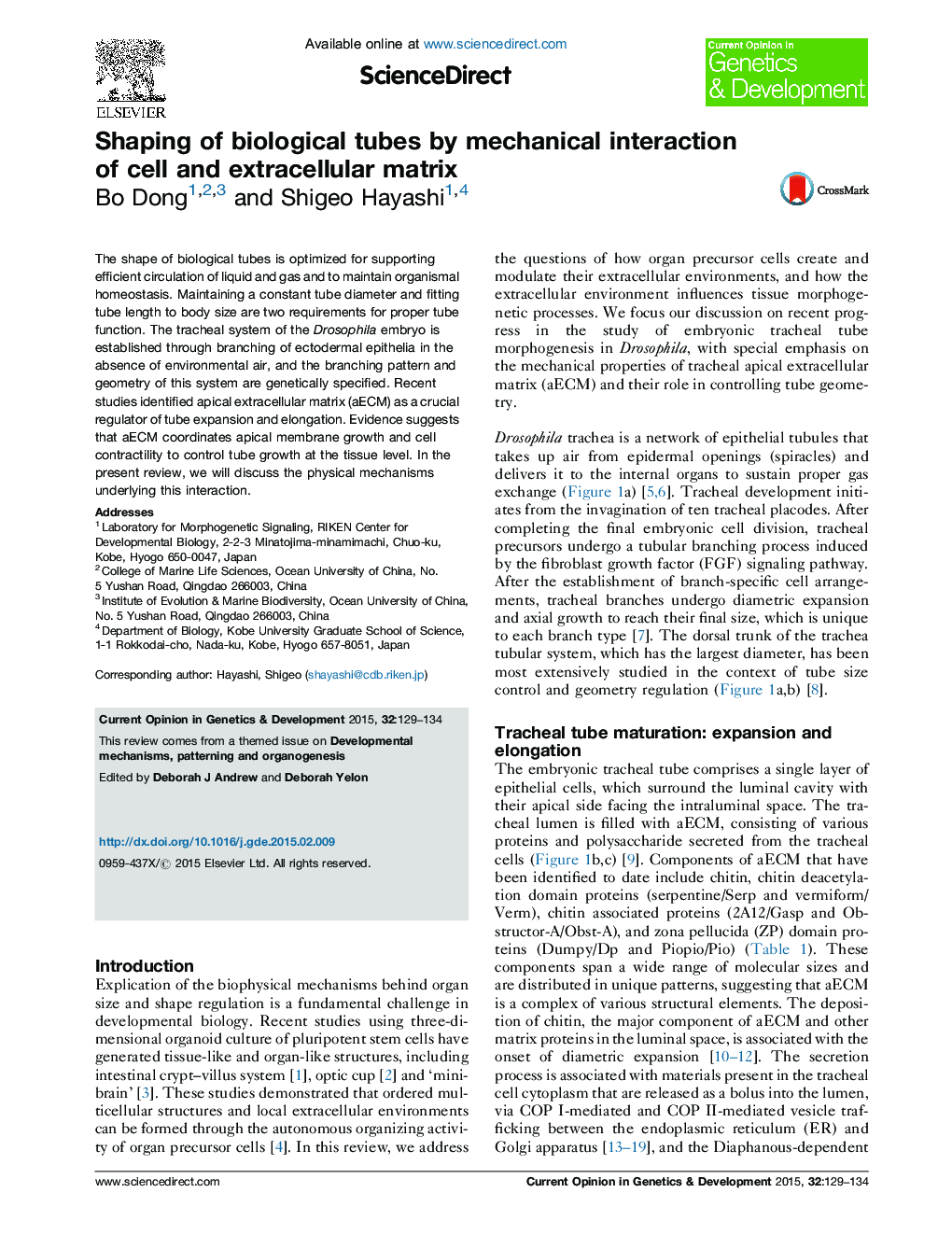| Article ID | Journal | Published Year | Pages | File Type |
|---|---|---|---|---|
| 5893134 | Current Opinion in Genetics & Development | 2015 | 6 Pages |
Abstract
The shape of biological tubes is optimized for supporting efficient circulation of liquid and gas and to maintain organismal homeostasis. Maintaining a constant tube diameter and fitting tube length to body size are two requirements for proper tube function. The tracheal system of the Drosophila embryo is established through branching of ectodermal epithelia in the absence of environmental air, and the branching pattern and geometry of this system are genetically specified. Recent studies identified apical extracellular matrix (aECM) as a crucial regulator of tube expansion and elongation. Evidence suggests that aECM coordinates apical membrane growth and cell contractility to control tube growth at the tissue level. In the present review, we will discuss the physical mechanisms underlying this interaction.
Related Topics
Life Sciences
Biochemistry, Genetics and Molecular Biology
Developmental Biology
Authors
Bo Dong, Shigeo Hayashi,
